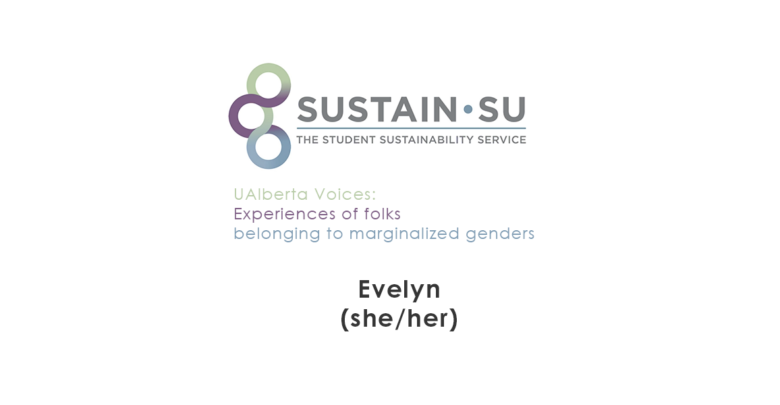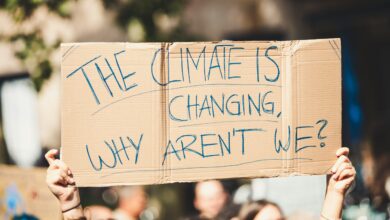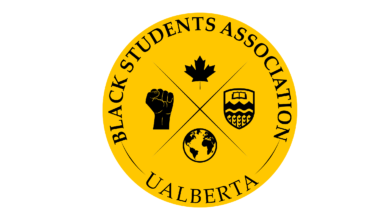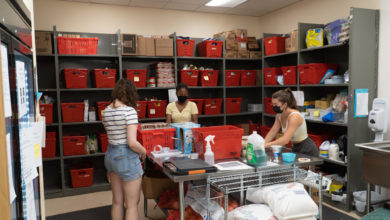LGBTQIA2S+ representation in Albertan educational institutions: A Q&A with Evelyn
 Pia Co
Pia CoThis guest column is written through a partnership with Sustain SU, a service provided by the University of Alberta Students’ Union. The interviews and articles have been conducted and written by Sustain SU ambassadors, and edited by The Gateway for publication.
This article is the final of a multi-part series named “UAlberta Voices: Experiences of Folks Belonging to Marginalized Genders“ that aims to highlight the experiences of students and community members belonging to marginalized genders in leadership positions within the University of Alberta campus and Edmonton community.
This is a question and answer (Q&A) session with Evelyn (she/her), on the topic of LGBTQIA2S+ representation in Albertan educational institutions.
This interview has been edited for brevity and clarity.
Q: Please tell us a little bit about yourself (name, pronouns, university affiliation, faculty, hobbies, background/heritage, etc.)?
Evelyn [she/her]: My name is Evelyn, and my pronouns are she/her. I am in the faculty of Education, majoring in general science and minoring in teaching English as a second language. My hobbies include reading, gaming, going for walks, and cooking.
Q: Do you hold intersecting identities or forms of oppression (ex. racism, colourism, homophobia, transphobia, ableism, fatphobia, ageism, etc.) that have placed a barrier on your ability to be recognized and heard as a leader within the campus community?
Evelyn: Mostly being trans comes with its own struggles. When it comes to being visible, back in my first year, I was in the closet. However, I came back out recently. So, really, I have not been out for very long, but the struggle for finding myself has placed a barrier. It was kind of an internalized sense of almost feeling invisible or unheard. Most of these conflicts were internalized homophobia and transphobia.
Q: Based on your leadership experiences, and/or life experiences, what is your perception of the prevalence of gender inequality in Edmonton or Alberta?
Evelyn: I know that there is still wage inequality between men and women. There have been efforts made both within the campus community and across a variety of careers to increase the presence of women and to create more diverse working environments, including LGBTQ+ people in STEM (science, technology, engineering and math).
I have not yet experienced or know of someone being denied a job or wage being lower because they were trans. However, I know that gender inequality exists within Edmonton.
Q: That being said, where do you feel the responsibility for eliminating gender inequality should lie?
Evelyn: Everyone has a part to play in this. The government has a responsibility to place policies, as well as workplaces should include policies to increase equality and create inclusive environments. Places such as schools, especially for my field of education, should promote the workplace as a space that is safe for people who are gender minorities or their sexual orientation that makes up the minority.
It is also the responsibility of the individual to self-reflect, understand where your own ignorance lies on the various issues to educate yourself. For people who do belong to the LGBTQ+ community, we need more people advocating. I know it’s hard to do and that there are risks involved. However, being an advocate plays an important role.
Q: What are the chief obstacles to achieving greater gender equality within the communities you are part of?
Evelyn : I think one of the biggest obstacles that still exist is ignorance. Ignorance that is born out of political views or religious views is one obstacle. There is a lot of fear and misunderstanding; lots of people fear what they do not know but also not taking their time to understand. Lack of knowledge or lack of understanding of what gender actually means or what sexuality actually is. Some people who are trans decide to medically transition, some face barriers with finding doctors who are competent in prescribing treatments such as hormone treatments. Within workplaces and schools… as much as we can try to create safe spaces and allow students to form Queer Straight Alliance (QSAs), a lot of staff do not feel like they can come out, so I think especially in schools, obstacles exist.
Q: In what ways do you think having these intersecting identities hinders and/or bolsters your ability to provide meaningful mentorship to youth in your community?
Evelyn: I see it as an opportunity to show students that they are not alone. One of the hardest things I’ve experienced is feeling like I’m the only person going through what I’m going through. To have someone else who understands that would help students know that I am a safe person to come out to if they need that support.
It’s also an opportunity to promote advocacy within school communities. Advocating for students provides opportunities for students to become leaders themselves. On the other hand, a lot of teachers and staff who are LGBTQ+ are not out to the school community.
However, I do see some risks in being out, especially if there parents who know about it. There are fears, like “are the parents going to send the kids to different schools?”, “are parents going to try to look for ways to get me fired?” I know there is a policy within public school education that emphasizes the expectation of not discriminating against students or school staff because of their gender identity or sexual orientation, but there is still that sense of fear if other people will look for different reasons to advocate for my termination.
Q: In what ways do you think the current Alberta education system can work towards creating a safe learning environment and/or establishing gender-inclusive classrooms for LGBTQ+ students?
Evelyn: There are various ways to do that. One is to further enforce the no discrimination policy, increase the presence of a safe space, and make sure to create a safe space for staff as well. For staff and parents, and for even students who are either LGBTQ+ or those looking for more information, have resources available to give them and giving training to staff on LGBTQ+ issues. As far as helping students feel safe and included, use the names and pronouns they want you to use. Give students the opportunity to play on the sports teams with genders that they identify with. Doing that helps to affirm who they are. The same applies to washrooms. Allow them to use washrooms of the gender they feel comfortable with or create more all-gender washrooms. For staff training, the Alberta education system should train them on how to combat bullying, especially homophobic or transphobic bullying.
Q: Based on your life experiences, do you have any tips for post-secondary students or youth who do face barriers because of their gender identity?
Evelyn: First of all, know that you are not alone; know that there is someone else out there who is going through the same thing, and there are people out there who are willing and able to listen to you and will advocate for you. Also, if you haven’t come out or have only come out to some people but not others, know that visibility is a choice. You only need to do that if you feel safe enough to do so. You are not under any obligation to anyone to come out. That is entirely your choice. You are still valid either way.
One barrier that a lot of people face, especially in terms of identity, is the idea of passing as the gender that the person identities with. Remember that not everyone’s transition is the same. Not everyone medically transitions. Not everyone who is trans experiences dysphoria or discomfort with either certain physical characteristics, or gender roles, or how they dress. Not everyone experiences dysphoria the same way. You can express yourself however you want; wear dresses or a button-up shirt, wear makeup or no makeup. Even for the name that you choose, you can choose to keep or change your name. All of that is valid. Your journey is your own.
One of the big things, especially if you are coming out, is that it takes time, so be patient with yourself.
Be patient with other people too. It also takes time for other people to adjust to the changes that happen. It takes time to learn names and pronouns. Some people do not understand what being transgender is like, but they want to learn more. Please be patient with those who are coming out. I know that there are a lot of people who want to learn more and to do better.
Q: Do you have any recommendations regarding resources available on campus, or within the Edmonton community to help individuals who struggle with LGBTQ+ issues?
Evelyn [she/her]: I know on campus there is still The Landing group. There is the Pride Centre, and they can help people connect with doctors, counselling, offer peer support, basically anything. Skipping Stone is based in Calgary, but they also provide general information as well. The LGBTQ+ Wellness Centre is a medicentre, if you consider medical transitioning or peer support. The Trevor Project provides crisis and suicide intervention for LGBTQ+ youth.
The Counselling and Clinical Services (CCS) at UofA have counsellors who are friendly toward LBGTQ+ individuals. One of the counsellor’s pages has a letter and response form about coming out. The Letter is called “Dear Maddi,” and it’s a good read for anyone coming out. PFLAG is a resource started by parents of LGBTQ+ youth designed to help other families support their children.
Q: Are there enough resources available for LGBTQ+ youth in Edmonton education institutions?
Evelyn: At present, I know that in the Gay Straight Alliance (GSA) and Queer Straight Alliance (QSA), there are lots of information that gets shared. The Health curriculum from the previous government did include gender identities and sexual orientations, but unfortunately, the curriculum states that it is still optional whether parents want kids to participate in that. I think the availability of resources could be better.
Q: What other proactive actions do you think students, parents of students, and teachers should take to create a more respectful, inclusive, and accepting school environment?
Advocate in schools and communities, promote QSAs and GSAs (gay-straight alliences), promote inclusivity in clubs and sports, and in classrooms as well.
Some advice for parents: believe in your children and believe when they come out to you. Your children know more about themselves than a lot of people give them credit for. Another thing for parents, and teachers as well, use the proper names and pronouns that your kids or students feel the most comfortable using. It is affirming, validating, and feeling safe and accepted increases their mental health and self-esteem.
[On the topic of] proactiveness for teachers, always be open to having these conversations with your students; do not avoid talking about LGBTQ+ issues. Your students will be more comfortable asking questions and exploring these issues for themselves if they know that you are open to it.Do not out your students. It is not your place to do that, but also if the student has not come out yet and you out them to their parents, for example, it can put the student at risk because you don’t know how open their parents are or whether or not they will accept their child for being who they are.
Day one in the classroom (first day of school), ask for names and pronouns to show that you care about their identities. Put up a rainbow flag, but do not put it up just for show. Putting up the rainbow flag needs to be actually something you are going to advocate for, especially for those who are gender and sexual minorities.




